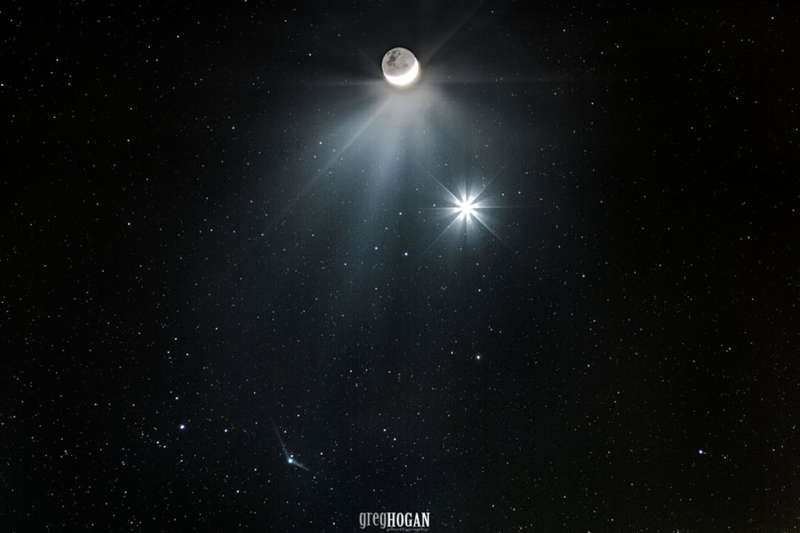
|
Credit & Copyright: Greg Hogan
Explanation:
A
crescent Moon and brilliant Venus met in predawn
skies on December 7, a
beautiful conjunction of planet
Earth's two brightest celestial beacons after the Sun.
Harder to see but
also
on the scene was Comet Catalina
(C/2013 US10).
The fainter comet clearly sporting two tails,
lunar night side, bright sunlit lunar crescent, and brilliant morning star,
are all recorded here by combining short and long exposures
of the same field of view.
Pointing down and right, Catalina's dust tail
tends to trail behind the comet's orbit.
Its ion tail, angled toward
the top left of the frame, is blowing away from the Sun.
Discovered in 2013, the new visitor from the
Oort cloud
was closest to the Sun on November 15 and is now outbound,
headed for its closest approach to Earth in mid-January.
Watch: The
Geminids
|
January February March April May June July August September October November December |
| ||||||||||||||||||||||||||||||||||||||||||||||||
NASA Web Site Statements, Warnings, and Disclaimers
NASA Official: Jay Norris. Specific rights apply.
A service of: LHEA at NASA / GSFC
& Michigan Tech. U.
Based on Astronomy Picture
Of the Day
Publications with keywords: comet - Moon - Venus
Publications with words: comet - Moon - Venus
See also:
